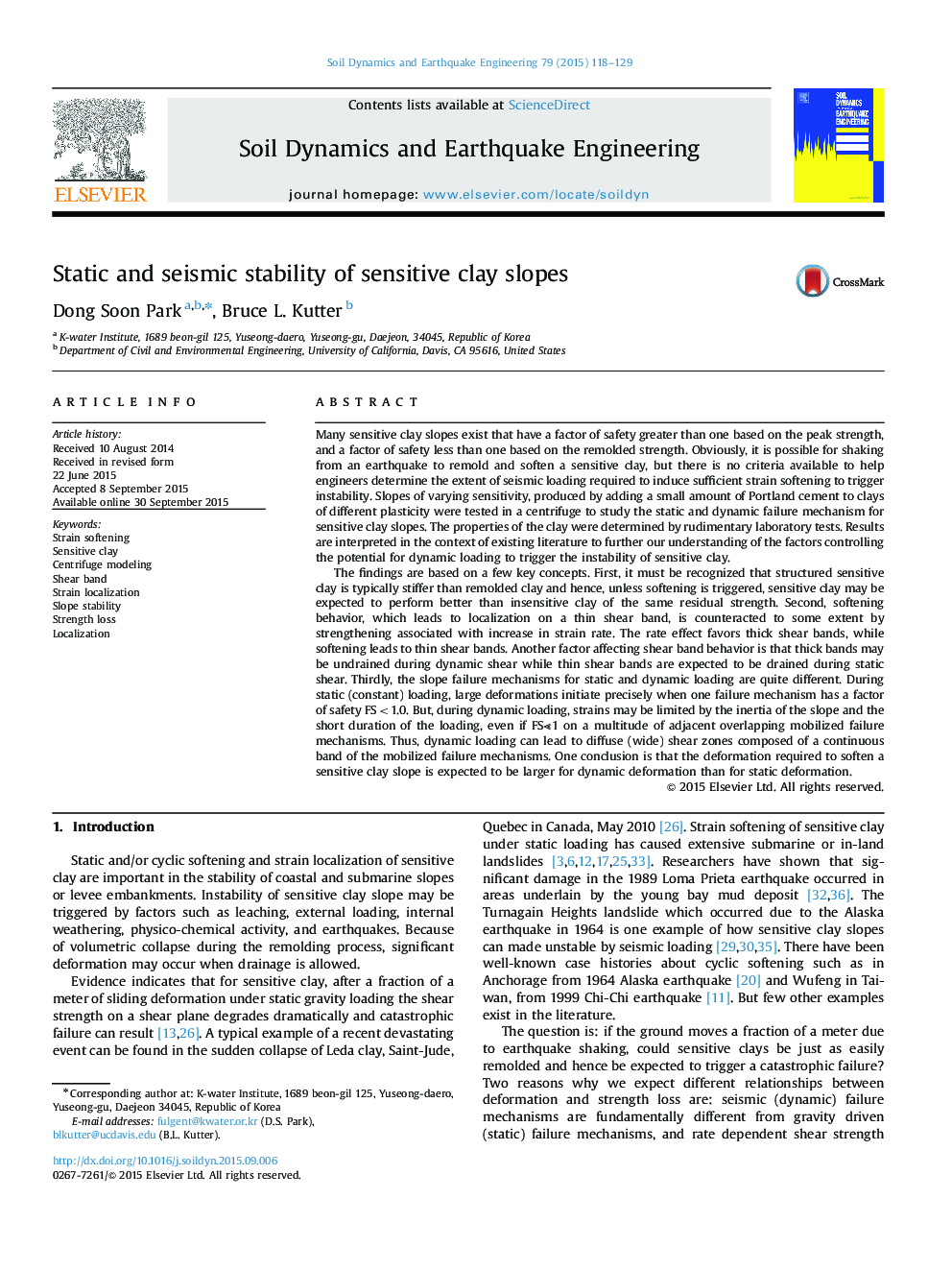| کد مقاله | کد نشریه | سال انتشار | مقاله انگلیسی | نسخه تمام متن |
|---|---|---|---|---|
| 303999 | 512768 | 2015 | 12 صفحه PDF | دانلود رایگان |
• Centrifuge and laboratory tests are given to study instability of sensitive clay.
• Dynamic loading can lead to diffused shear bands and deeper failure surfaces.
• Initial stiffness of sensitive clay can perform better than insensitive clay before softening.
• Competing effects of strain softening and strain-rate strengthening are found.
• The effects above may produce a rate-dependent shear band thickness.
Many sensitive clay slopes exist that have a factor of safety greater than one based on the peak strength, and a factor of safety less than one based on the remolded strength. Obviously, it is possible for shaking from an earthquake to remold and soften a sensitive clay, but there is no criteria available to help engineers determine the extent of seismic loading required to induce sufficient strain softening to trigger instability. Slopes of varying sensitivity, produced by adding a small amount of Portland cement to clays of different plasticity were tested in a centrifuge to study the static and dynamic failure mechanism for sensitive clay slopes. The properties of the clay were determined by rudimentary laboratory tests. Results are interpreted in the context of existing literature to further our understanding of the factors controlling the potential for dynamic loading to trigger the instability of sensitive clay.The findings are based on a few key concepts. First, it must be recognized that structured sensitive clay is typically stiffer than remolded clay and hence, unless softening is triggered, sensitive clay may be expected to perform better than insensitive clay of the same residual strength. Second, softening behavior, which leads to localization on a thin shear band, is counteracted to some extent by strengthening associated with increase in strain rate. The rate effect favors thick shear bands, while softening leads to thin shear bands. Another factor affecting shear band behavior is that thick bands may be undrained during dynamic shear while thin shear bands are expected to be drained during static shear. Thirdly, the slope failure mechanisms for static and dynamic loading are quite different. During static (constant) loading, large deformations initiate precisely when one failure mechanism has a factor of safety FS<1.0. But, during dynamic loading, strains may be limited by the inertia of the slope and the short duration of the loading, even if FS⪡1 on a multitude of adjacent overlapping mobilized failure mechanisms. Thus, dynamic loading can lead to diffuse (wide) shear zones composed of a continuous band of the mobilized failure mechanisms. One conclusion is that the deformation required to soften a sensitive clay slope is expected to be larger for dynamic deformation than for static deformation.
Journal: Soil Dynamics and Earthquake Engineering - Volume 79, Part A, December 2015, Pages 118–129
